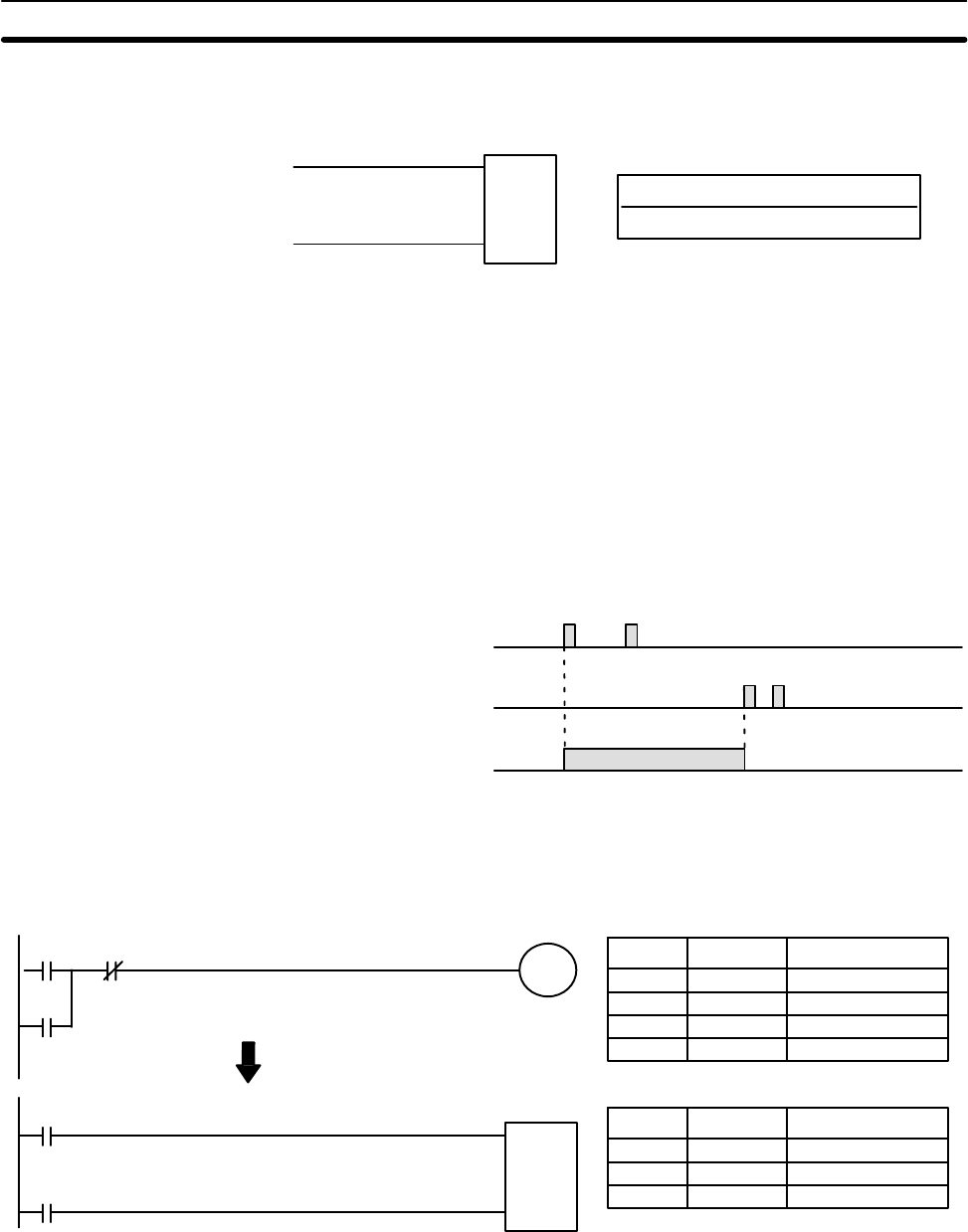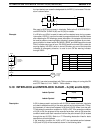
154
5-9-4 KEEP – KEEP(11)
B: Bit
IR, AR, HR, LR
Ladder Symbol Operand Data Areas
S
R
KEEP(11)
B
Limitations Any output bit can generally be used in only one instruction that controls its sta-
tus. Refer to 3-3 IR Area for details.
Description KEEP(11) is used to maintain the status of the designated bit based on two
execution conditions. These execution conditions are labeled S and R. S is the
set input; R, the reset input. KEEP(11) operates like a latching relay that is set by
S and reset by R.
When S turns ON, the designated bit will go ON and stay ON until reset, regard-
less of whether S stays ON or goes OFF. When R turns ON, the designated bit
will go OFF and stay OFF until reset, regardless of whether R stays ON or goes
OFF. The relationship between execution conditions and KEEP(11) bit status is
shown below.
S execution condition
R execution condition
Status of B
KEEP(11) operates like the self-maintaining bit described in 4-8-3 Self-maintain-
ing Bits. The following two diagrams would function identically, though the one
using KEEP(11) requires one less instruction to program and would maintain
status even in an interlocked program section.
00002 00003
00500
00002
00003
00500
S
R
KEEP(11)
00500
Address Instruction Operands
Address Instruction Operands
00000 LD 00002
00001 OR 00500
00002 AND NOT 00003
00003 OUT 00500
00000 LD 00002
00001 LD 00003
00002 KEEP(11) 00500
Flags There are no flags affected by this instruction.
Precautions Exercise caution when using a KEEP reset line that is controlled by an external
normally closed device. Never use an input bit in an inverse condition on the re-
set (R) for KEEP(11) when the input device uses an AC power supply. The delay
in shutting down the PC’s DC power supply (relative to the AC power supply to
Bit Control Instructions Section 5-9


















